Wootz Damascus Steel: The Mysterious Metal that Was Used in Deadly Blades
Wootz steel was amongst the finest in the world. It is the metal that was used to fashion weapons such as the famous Damascus blades of the Middle Ages. However, Wootz steel dates back much further than the Medieval period. The technology originated in ancient India millennia before many other cultures ever found out about it.
This is a type of crucible steel, i.e. a type of steel produced by melting the raw materials in a crucible. Due to its high quality, Wootz steel was traded all over the ancient and Medieval world, including Europe, the Middle East, and China. The qualities of Wootz steel were well-suited to making weapons.
The Origins of Wootz Steel
It has been claimed that ‘Wootz’ is in fact a corruption of ‘ukku’, the word for steel in many South Indian languages. This word only entered the English language towards the end of the 18th century, when Europeans first began learning about the way this steel was produced. It is known that by then the Indians were already producing Wootz steel for over two millennia.
- Ten Things the Ancients Did Better than Us
- A Step Closer to the Mysterious Origin of the Viking Sword Ulfberht
- The Legacy of Armenia: Trade, Metallurgy, and Forging of Precious Metals of the Ancient World
Whilst it is unclear as to when exactly Wootz steel was first produced in India, the earliest known literary reference to steel produced by the ancient Indians can be found in the records of Alexander the Great’s campaign there. This campaign took place towards the end of the 4th century BC, and the Greek ruler is reported to have been presented with 100 talents of Indian steel. There is also archaeological evidence for the production of steel in ancient India. This is evident, for instance, in the site of Kodumanal, in the southern Indian state of Tamil Nadu. Archaeologists discovered an iron and steel industrial center dated to the Chera Dynasty (established round the 3rd century BC) at that site.
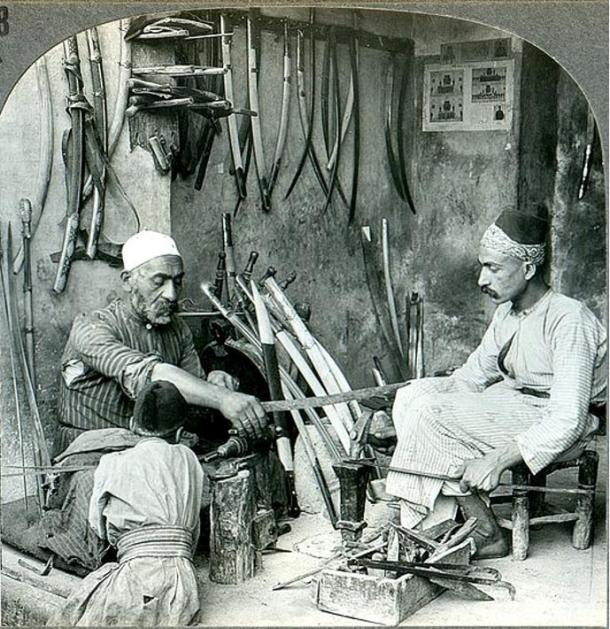
A sword maker of Damascus, Syria. Circa 1900. (Public Domain)
A Guarded Secret
The technique for producing Wootz steel was a closely guarded secret amongst the metallurgists of India for a very long time. Thus, the Indians had monopoly over the production and export of this highly-desired metal. The steel produced in India was exported in the form of ingots and reached such places as the Roman world in the west and China in the East.
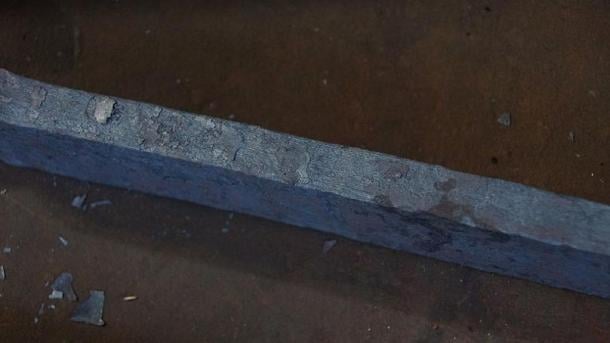
‘Forging of Damascus Steel in Solingen.’ (NearEMPTiness/CC BY SA 3.0)
It is believed that during the Medieval period, Wootz steel was exported to the Middle East, where it was fashioned into the famed Damascus blades. Thanks to the Crusaders, who encountered Muslim warriors wielding this high-quality blade, the fame of the Damascus blade spread to Europe as well.
At that point of time, nothing produced in Europe could match the quality of India’s Wootz steel, and India continued to be the leading nation for steel production in the following centuries. During the late 17th century, for example, Wootz steel was being produced at almost an industrial scale, as tens of thousands of steel ingots were being shipped from the Coromandel Coast to Persia.
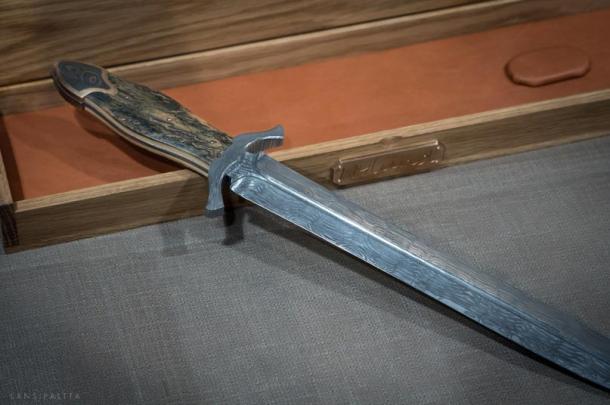
A modern Damascus sword by Nylund Knives, Finland. (Sami Länsipaltta/CC BY NC SA 2.0)
It was only around the beginning of the 19th century that Europeans finally gained some idea as to how Wootz steel was being produced. European travelers to India, such as Francis Buchanan, Benjamin Heyne, and Henry Wesley Volsey, recorded in their accounts that the Indians were producing Wootz steel using a crucible process.
The Crucible Process
The crucible process is one of the three main types of iron manufacture used during the pre-modern period, the other two being the bloomery and the blast furnace. The crucible process involves the placement of an iron source, such as bloomery iron or wrought iron, and carbon-rich materials, such as wood chips, into a clay crucible.
- Historic Indian sword was masterfully crafted
- 6 Advanced Ancient Inventions Beyond Modern Understanding
- From Chrome Plating to Nanotubes: The Modern Chemistry First Used in Ancient Times
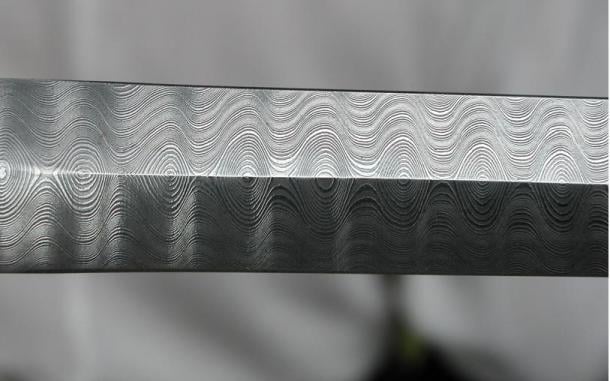
Damascus steel sword blade. (albertstraub/CC BY 2.0)
This vessel is then closed and heated over a period of several days at a temperature of between 1300 °C and 1400 °C. As a result of this, the carbon is absorbed by the iron, lowering its melting point, and causing it to liquefy. This addition of carbon to iron (which is between 1% and 2%) also imparts certain qualities, such as high ductility, high impact strength, and reduced brittleness, to the new product. Needless to say, these are desirable qualities for the making of blades. After a slow cooling process, the Wootz cakes were ready to be exported, and to be fashioned into blades.
It was only during the 20th century, after decades of experimentation, that the science behind the production of Wootz steel was understood. Indeed, it may be said that the metallurgists of ancient India were, technologically speaking, way ahead of their time.
Top Image: With a blade of Damascus steel (similar to Wootz steel), the blade makes this object a treasured piece. Source: jasleen_kaur/CC BY SA 2.0
By Ḏḥwty
References
Extance, A., 2016. Raiders of the lost steel. [Online]
Available at: https://www.chemistryworld.com/feature/raiders-of-the-lost-steel/9344.article
Föll, H., 2018. 10.4. Crucible Steel. [Online]
Available at: https://www.tf.uni-kiel.de/matwis/amat/iss/kap_a/backbone/ra_4_1.html
Hirst, K. K., 2018. Wootz Steel: Making Damascus Steel Blades. [Online]
Available at: https://www.thoughtco.com/wootz-steel-raw-material-damascus-blades-173235
Ranganathan, S. & Srinivasan, S., 2006. A Tale of Wootz Steel. [Online]
Available at: https://www.ias.ac.in/article/fulltext/reso/011/06/0067-0077
Sasiekaran, B. & Rao, B. R., 1999. Technology of Iron and Steel in Kodumanal - An Ancient Industrial Centre in Tamilnadu. [Online]
Available at: https://web.archive.org/web/20150724033115/http://www.new1.dli.ernet.in/data1/upload/insa/INSA_1/20005b66_263.pdf
Srinivasan, S. & Ranganathan, S., 2018. Wootz Steel: An Advanced Material of the Ancient World. [Online]
Available at: http://materials.iisc.ernet.in/~wootz/heritage/WOOTZ.htm
The Editors of Encyclopaedia Britannica, 2015. Wootz (steel). [Online]
Available at: https://www.britannica.com/technology/wootz-steel
















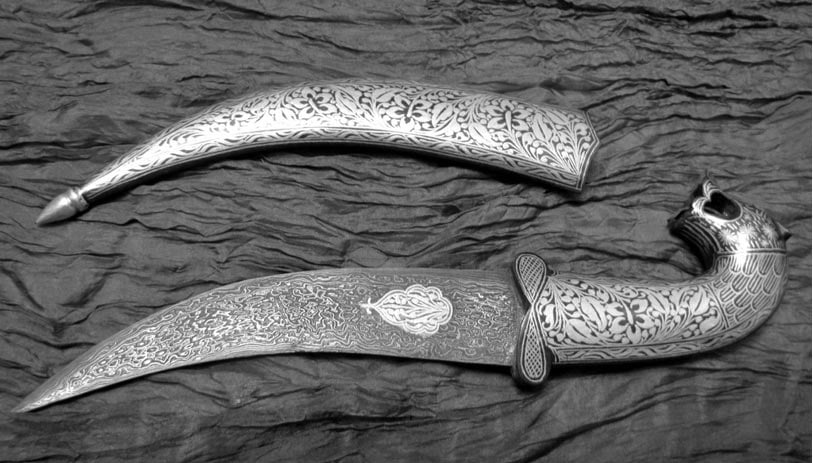

Comments
Surprised there aren't so many depictions of Wootz Steel in fantasy and historical fiction seeing as to how it was so famous, after a quick search the only piece of media of any note is Eiichiro Oda's One Piece and even then it appears rather briefly
A lot of this is actually nanotech. If you consider that the ancients were experimental and scientific you can see how this could have come about. It is not that difficult to make graphene platelets using mechanical milling. E.g if you place graphite from the fire into a leather puch and hit it with a hammer for a day, you will get few layer graphene, it pretty much reinforces anything. Add say 2% by weight to a resin and it improves the modulus by 25% and dramatically improves the propensity for it to fracture. I'm not suggesting they had microscopes to see what was going on at the nanometer scale, they didn't need to, make one what proportion of carbon increases the blades ability to cut. ONce you get the right proportion, you might try to processes it into a finer powder and bingo, you eventually get Damascus steel.
Kind of hard to say that, what with the original recipe for Damascus steel being lost through the ages. For all historical purposes, however, Damascus steel is rumored to have been serated at the nanolevel. Thusly, making it much sharper than anything a Japanese swordsmith has ever been able to produce.
Japan made better swords!